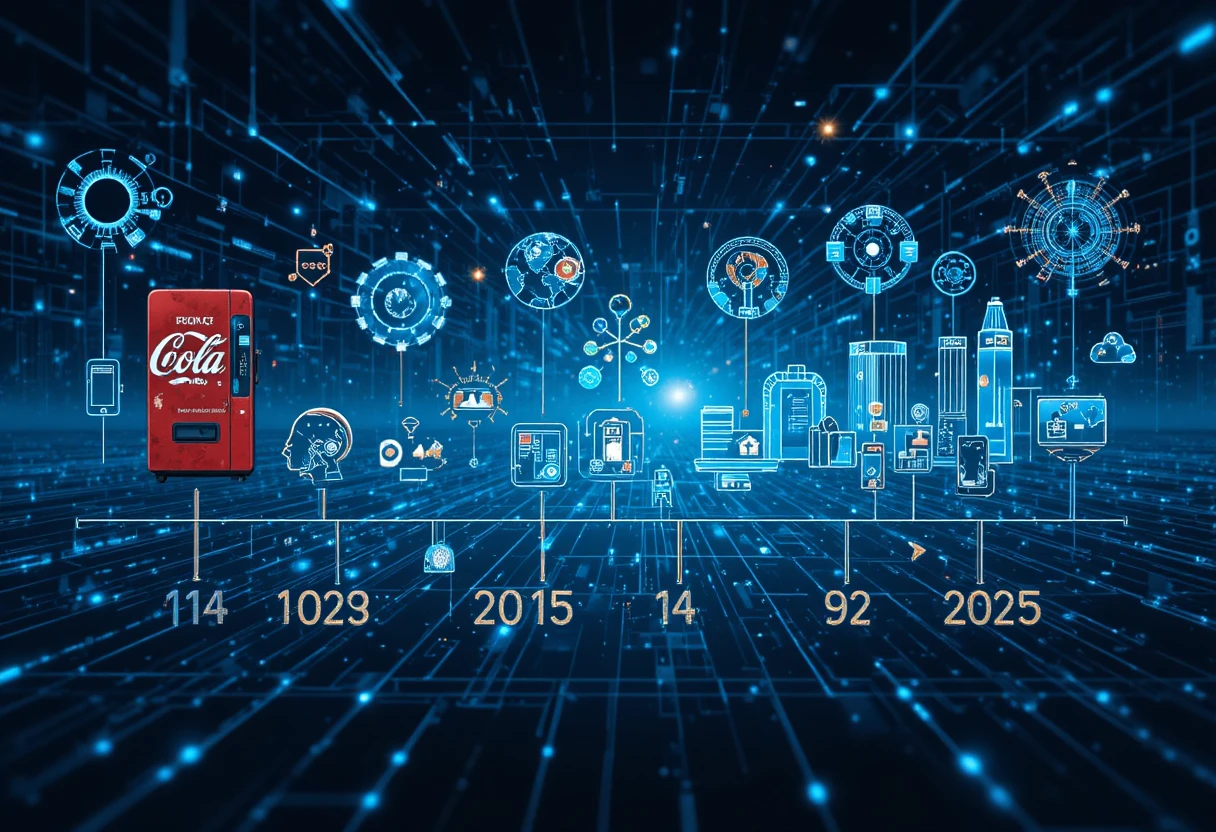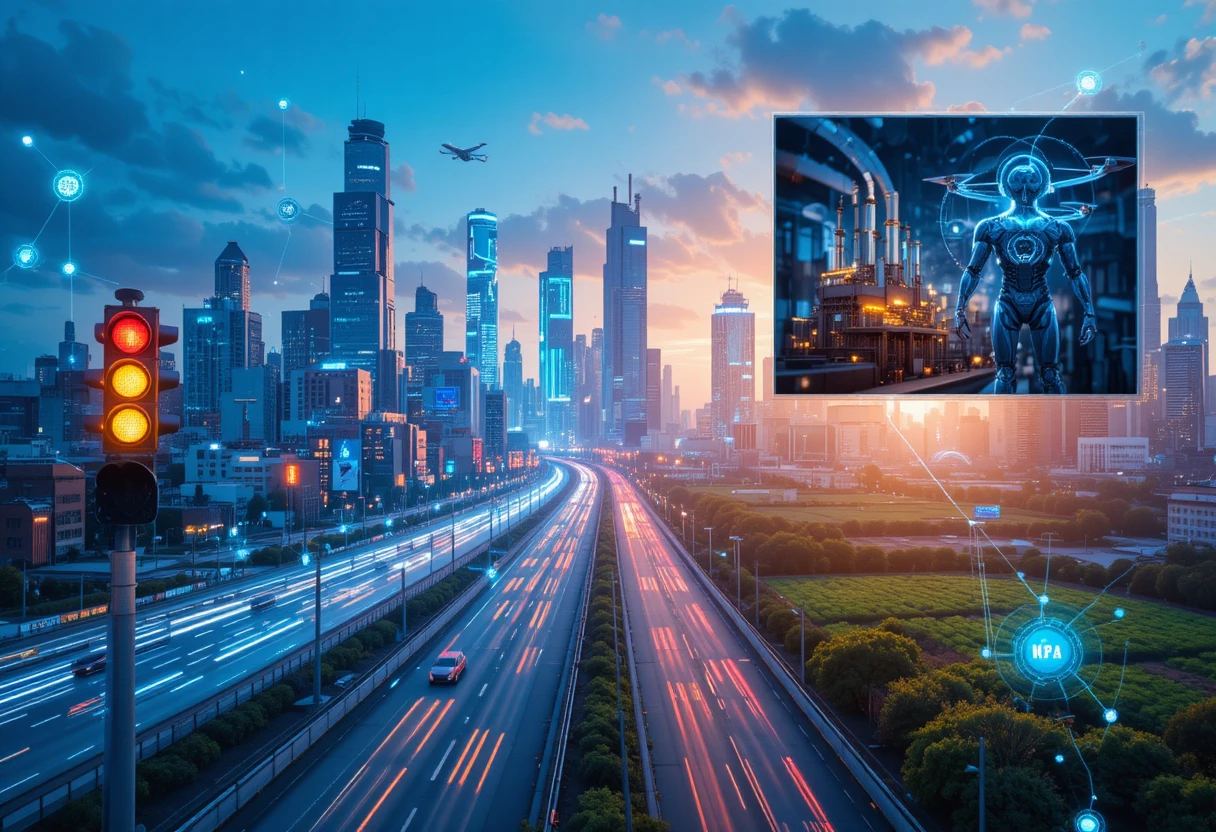The Internet of Things (IoT) represents a paradigm shift in how we interact with technology, embedding connectivity into everyday objects to create a seamless network of intelligent devices. As of October 2025, IoT has permeated nearly every sector, from smart homes and healthcare to industrial automation and smart cities. With billions of devices connected worldwide, IoT is projected to generate economic value exceeding $15 trillion by 2030, driven by advancements in AI, 5G, and edge computing. This post provides a comprehensive 3000-word exploration of IoT, covering its definition, history, workings, applications, benefits, challenges, current trends, and future prospects, highlighting its transformative impact on society and the economy.
What Is the Internet of Things?
The Internet of Things refers to the network of physical devices embedded with sensors, software, and other technologies that enable them to connect and exchange data over the internet. These “things” range from household appliances like smart refrigerators to industrial sensors monitoring machinery. Unlike traditional computing, IoT devices communicate autonomously, collecting and sharing data to enable real-time decision-making and automation.
Core Components of IoT
IoT systems comprise several key elements:
- Devices/Sensors: The physical endpoints, such as wearables or environmental monitors, that gather data.
- Connectivity: Networks like Wi-Fi, Bluetooth, or cellular (including 5G) that link devices to the cloud or each other.
- Data Processing: Edge computing or cloud platforms that analyze data for insights.
- User Interface: Apps or dashboards allowing human interaction. These components work together to create ecosystems where devices “talk” to each other, optimizing processes like energy use in smart homes.
How IoT Differs from Traditional Internet
While the traditional internet connects people through computers and smartphones, IoT extends this to inanimate objects, creating a “smart” environment. For example, a connected thermostat adjusts temperature based on occupancy data, reducing energy waste without user input. This interoperability is the hallmark of IoT, fostering efficiency and innovation.
The History of IoT
The concept of IoT has roots stretching back decades, evolving from theoretical ideas to a global phenomenon.
Early Origins and Conceptual Foundations
The term “Internet of Things” was coined in 1999 by Kevin Ashton, a British technology pioneer, during a presentation at Procter & Gamble about RFID technology. However, precursors date to the 1980s, with Carnegie Mellon University’s modified Coke machine in 1982, which reported its inventory and temperature via the internet—the first IoT device. In the 1990s, advancements in wireless networks and microelectromechanical systems (MEMS) laid the groundwork, with MIT’s Auto-ID Center promoting RFID for supply chain management.
Growth in the 2000s
The 2000s saw IoT gain traction with the proliferation of broadband internet and IPv6, which expanded addressable devices. In 2008-2009, the number of connected devices surpassed the global population, marking a tipping point. Companies like Cisco and IBM pushed IoT forward, with IBM’s “Smarter Planet” initiative in 2008 highlighting applications in urban planning and energy. Standards bodies like the International Telecommunication Union (ITU) formalized IoT definitions.
Modern Expansion: 2010s to 2025
The 2010s brought consumer adoption with products like Nest Thermostat (2011) and Amazon Echo (2014), integrating voice AI. Industrial IoT (IIoT) surged with Industry 4.0, emphasizing predictive maintenance. By 2025, IoT has matured with 5G enabling ultra-low latency and AI integration for smarter analytics. Challenges like security have prompted regulations, such as the EU’s IoT Cybersecurity Act. This history reflects IoT’s progression from niche experiments to a foundational technology.

How IoT Works: The Technical Backbone
IoT operates through a layered architecture that facilitates data flow from devices to actionable insights.
IoT Architecture Layers
- Perception Layer: Sensors and actuators collect data (e.g., temperature, motion) and interact with the environment.
- Network Layer: Transmits data via protocols like MQTT or CoAP over networks such as LoRaWAN for long-range, low-power applications.
- Application Layer: Processes data in the cloud or edge, using platforms like AWS IoT or Azure IoT Hub for analytics.
- Business Layer: Integrates insights into decision-making, such as optimizing supply chains.
Key Technologies Enabling IoT
- Sensors and Actuators: MEMS sensors detect changes, while actuators respond (e.g., smart locks).
- Connectivity Standards: 5G/6G for high-speed, NB-IoT for low-bandwidth needs.
- Data Management: Big data tools handle the volume, with AI/ML for pattern recognition.
- Security Protocols: Encryption and blockchain ensure secure data transmission. In practice, an IoT system might involve a smart factory where sensors monitor equipment health, sending alerts via cloud analytics to prevent downtime.
Challenges in Implementation
Interoperability remains key, with standards like Matter (2022) aiming to unify ecosystems. Power management is crucial for battery-operated devices, often using energy-harvesting techniques.
Applications of IoT
IoT’s versatility drives its adoption across diverse fields, enhancing efficiency and innovation.
Smart Homes and Consumer IoT
In homes, IoT enables automation: smart lights adjust based on presence, refrigerators order groceries via integrated cameras. Devices like Google Nest or Philips Hue create ecosystems for energy savings and security. Voice assistants integrate these, with 2025 trends including emotion-aware devices detecting user moods.
Healthcare and Wearables
IoT revolutionizes healthcare through remote monitoring. Wearables like Fitbit or Apple Watch track vitals, alerting doctors to anomalies. In hospitals, IoT optimizes asset tracking and patient flow. Digital twins simulate patient responses for personalized care. By 2025, IoT devices in clinics number over 646 million.
Industrial and Manufacturing (IIoT)
IIoT powers Industry 4.0 with predictive maintenance, reducing downtime by 50%. Sensors monitor machinery, using AI for forecasts. Smart factories in North America are valued at $500 billion in 2025. Applications include supply chain optimization via RFID.
Smart Cities and Agriculture
Smart cities use IoT for traffic management, waste optimization, and energy grids. In agriculture, soil sensors enable precision farming, boosting yields by 20%. Drones and automated irrigation systems exemplify this.

Benefits of IoT
IoT delivers tangible advantages, driving its rapid growth.
Efficiency and Cost Savings
Automation reduces manual intervention, cutting costs. Smart grids save energy, while predictive maintenance prevents expensive breakdowns. Businesses report up to 30% efficiency gains.
Enhanced Data-Driven Insights
Real-time data enables informed decisions. In retail, IoT tracks inventory, reducing stockouts by 25%.
Improved Quality of Life
Consumer IoT enhances convenience, from voice-activated homes to health monitoring that detects issues early. In smart cities, reduced traffic congestion improves air quality.
Economic and Environmental Impact
IoT fosters innovation, creating jobs in tech. Environmentally, it optimizes resources, potentially reducing global emissions by 15% through efficient systems.
Challenges and Limitations of IoT
Despite benefits, IoT faces significant hurdles.
Security and Privacy Risks
With 152,200 devices connecting per minute by 2025, vulnerabilities abound. Cyberattacks surged 300% in 2019, and 2025 sees AI-powered threats. Privacy concerns arise from constant data collection.
Interoperability and Standardization
Diverse protocols hinder seamless integration. Initiatives like Matter address this, but fragmentation persists.
Scalability and Data Management
Handling massive data volumes requires robust infrastructure. Edge computing helps, but costs can escalate.
Ethical and Societal Issues
IoT could exacerbate inequalities if access is uneven. Job displacement in automated industries is a concern.
Current Trends in IoT as of 2025
In 2025, IoT is evolving with AI integration and sustainability focus.
AIoT and Edge Computing
AIoT combines AI with IoT for intelligent systems, like emotion-aware devices. Edge computing processes data locally, reducing latency—vital for autonomous vehicles.
5G/6G and Connectivity Advances
5G enables massive device connectivity, with 6G on the horizon for ultra-reliable links. Cellular IoT shipments grow at 15.8% CAGR to 629.6 million by 2025.
Security Enhancements
Industry-wide standards and blockchain bolster security. Spending on IoT security reaches $631 million.
Digital Twins and Smart Ecosystems
Digital twins simulate physical assets for optimization, prominent in healthcare and manufacturing. Smart cities and metaverse integration are rising.
From X, discussions highlight blockchain in IoT and digital twins in healthcare.
The Impact of IoT on Society and Economy
IoT drives economic growth, with markets like Brazil’s reaching $99 billion by 2033. Societally, it promotes sustainability but raises surveillance concerns. In business, it enables new models like as-a-service offerings.
The Future of IoT
By 2030, IoT devices may exceed 75 billion, with quantum computing enhancing security. Trends include agentic AI for autonomous decisions and bio-interfaces in healthcare. Challenges like ethical AI and global standards will shape its trajectory, promising a hyper-connected world.

Conclusion
The Internet of Things has transformed from a conceptual framework to a ubiquitous force, enabling smarter, more efficient systems across industries. While benefits like cost savings and enhanced insights abound, addressing challenges such as security and privacy is crucial. In 2025, trends like AIoT and edge computing signal exciting advancements, paving the way for a future where the physical and digital realms are indistinguishable. Embracing IoT responsibly will unlock its full potential for societal good.